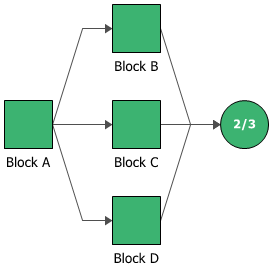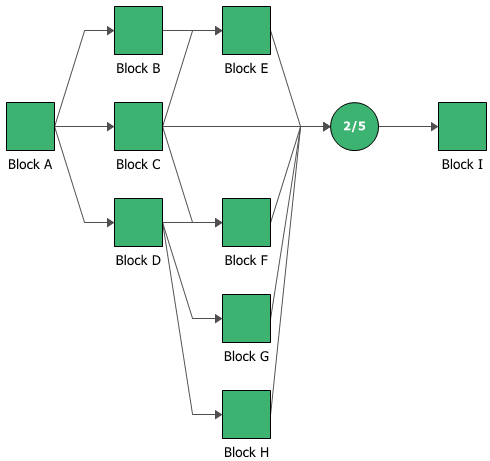Node Blocks and k-out-of-n Configurations
Node blocks allow you to specify a form of redundancy known as k-out-of-n redundancy. A k-out-of-n node can have n paths leading into it and requires that k out of n paths must function for the system to function.
The configuration in the figure shown next displays a k-out-of-n configuration where either Block B, Block C or Block D can fail without causing system failure, but if any two of the blocks fail, the system will fail.

The figure shown next displays another k-out-of-n node, this time used in a complex configuration. If more than three of the five blocks (blocks C, E, F, G and H) leading to the node fail, the system will fail.

To configure a node block, in addition to the common block properties, you will need to specify the number of paths that must reach the node in the Number of paths required field. If the required number of paths does not succeed, then the node is considered to be failed.
For node blocks in simulation diagrams, you can also specify throughput properties, which define the amount of output that can be processed by the block in a given period of time.